The Ultimate New Zealand Soccer Website | home
Part One | Part Two
Part One
Why are the people of New Zealand looking forward to the World Cup?
It’s the quadrennial showcase of women’s football to the watching world, and it’s something we’re keen to be a part of in part due to our history in the women’s game.
In 1975, New Zealand appeared on women’s football’s world stage for the first time, and won the Asian Cup. Then throughout the 1980s, at the Women’s World Invitational Tournaments in Taiwan, we were invariably thereabouts, culminating in the runners-up spot at the 1987 event (trophy pictured right).
Four years later, we were among the sixteen teams which contested the very first FIFA Women’s World Cup Finals, although our performance there was disappointing. After this, our pesky neighbours elbowed their way in, Australia usurping New Zealand as Oceania’s top dogs for the next few years.
So severely did this hamper New Zealand’s development in the women’s game over time that, come the 2004 Olympic Women’s Football Tournament, NZ didn’t even contest the Oceania qualifiers, the national body taking the stance that if the girls weren’t going to qualify, it would be better to invest the money saved in men’s football!
This was in the middle of a period between November 1998 and October 2006 when New Zealand played just fifteen internationals - the USA were regularly clocking up at least that many matches per year, by comparison. They were dark days for women’s football here, make no mistake!
Cue a new regime, in part to take advantage of Australia having switched confederations, a development which has been hugely beneficial for NZ women’s football in particular. But also to capitalise on the prospects promised by a crop of exciting young players who were coming through the ranks around this time, whose qualities demanded a sea change in the whole approach to the game in Godzone.
Some of those youngsters - Kirsty Yallop (right), for instance - caught the eye at the 2006 FIFA U-20 Women’s World Cup Finals, where we came desperately close to overcoming host nation Russia before holding Brazil to a 0-0 draw.
The latter result, in a country where rugby is king and Brazil are to football what the All Blacks are to the oval ball code, had people across the land sitting up and taking notice - “New Zealand drawing with Brazil in soccer? This cannot be!” Coming just a couple of months after the All Whites had lost 4-0 to Brazil made it even more of an eye-opener.
Undoubtedly, it is still one of our greatest results on the world stage, ranking on a par with the All Whites’ trio of draws at South Africa 2010. And it has been the springboard for a massive uprising in the women’s game in NZ which has brought about plenty of highlights.
Hosting the inaugural FIFA U-17 Women’s World Cup Finals is the obvious one, but there have been others - drawing 2-2 with Japan at the 2008 Olympics (we were 2-0 up with twelve minutes left); the runners-up slot in the 2009 Cyprus Women’s Cup; seeing a handful of our players - Rebecca Smith (above right), Hayley Moorwood and Ali Riley (right), for example - earn contracts to play the game professionally, to mention but three more.
While we qualified for the 2007 FIFA Women’s World Cup Finals, in truth that tournament came a wee bit too early in New Zealand’s revival as a force in women’s football. Four years on, however, we might just be ready to surprise a few folk, and that’s why people in NZ are looking forward to Germany 2011 most of all.
Why is the New Zealand women’s team doing better than the New Zealand men's Football Team?
There is a fairly strong argument to the contrary with this question, and it stems from twelve months ago - the All Whites’ efforts at South Africa 2010. You can’t do much better, as a team widely regarded as there just to make up the numbers, than to go out and get draws against Slovakia, Paraguay and the reigning world champions, Italy, and return home from a World Cup Finals with an unbeaten record.
If we’re addressing the issue in terms of comparing FIFA’s rankings, however, then the question has validity. As outlined earlier, New Zealand has a rich history in the women’s game, and if the Taiwan tournaments in the 1980s are any guide, we would have ranked among the top five in the world during that period.
That’s nose-bleed territory for us nowadays, but it just shows how good the likes of Michele Cox (right), Monique Van de Elzen, Wendy Sharpe, Debbie Pullen RIP, Barbara Cox, Donna Baker, Leslie King, Lyn Pedruco et al were as a team that they were among the best in the world some twenty-five years ago.
As it is, we head into Germany 2011 ranked 24th, while the men are ranked 60th, having peaked at an all-time-high of 49 in September last year.
|
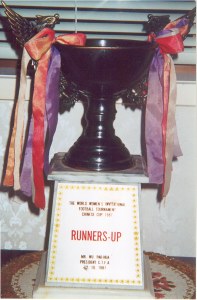 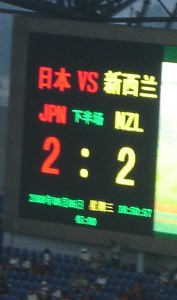 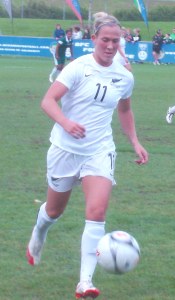  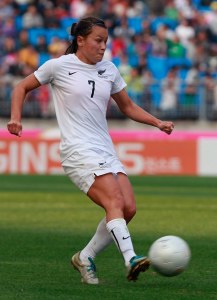 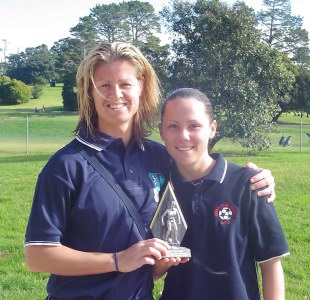  |
The women have consistently ranked just outside the top twenty for some time now, in part a reflection of our recent results - we’ve enjoyed wins over Argentina, Holland, Italy, Scotland and Switzerland, and draws with Canada, Japan (scoreboard below left), France, Holland, Korea Republic and England in the last five years - and in part due to the growth of the women’s game as a whole; it’s ferociously competitive, and becoming increasingly so, which is great.
What significance does Womens Football have in New Zealand?
It still plays second fiddle to the men’s game in many ways, including media coverage. This is my 25th year involved in NZ women’s football, and I’ve been writing about and reporting on it since 1991.
While I don’t want to sound as if I’m blowing my own trumpet, such is the lack of interest from the mainstream media generally that I dread to think what coverage the girls would have had over the years if I wasn’t doing what I do for the game, work done very much out of my love and respect for the girls and their efforts, commitment and dedication to be the best they can be in order to achieve their individual and collective objectives.
Of course, there’s a bit more interest than usual at present, because it’s a World Cup - these matches in Germany will see New Zealand’s senior women’s team entering double figures for the number of times they have graced the country’s television screens … and the clash with Mexico will be our 166th international - not a high percentage, is it?
Let’s put it this way - if the All Whites and the Football Ferns were playing matches at the same time, you’d be able to count on the fingers of one hand the number of New Zealand media in attendance at the girls’ game, a stark contrast to the at least three buses which would be required to transport the media from a hotel to the All Whites’ fixture.
So it’s an ongoing battle. In New Zealand, media coverage is dominated by the “big four” - rugby, rugby league, cricket and netball. Television will happily pay to cover events in these codes, but if other codes, including football, want television coverage, the code has to pay for the privilege. It’s an uneven playing field.
There are two reasons why the Football Ferns’ efforts in Germany will be shown on TV back home - because we’ve qualified, so there is a local interest factor, and because FIFA are supplying the coverage, as a result of which all New Zealand‘s games will be shown live, along with all games from the semi-finals onwards.
Let me be quite blunt about this - if New Zealand hadn’t qualified for Germany 2011, there would be next to no TV coverage of these finals in NZ. And without that local involvement, there would be virtually no interest shown by other mainstream media, either.
Which female footballer of NZ knows every child in NZ? And which female footballer of NZ will know every child in NZ soon?
I think what you’re asking is how many children are aware of our women’s players at present, and how many will be after Germany 2011.
The answer to both is a growing number - I can’t be too specific. It is certainly a great help that the games are being televised back home, albeit at 1am and 4.15am NZ time!
I mentioned earlier that a sea change is taking place in the whole approach to football in New Zealand, and the Football Ferns are very much a part of it. Each member of the squad is involved in school holiday coaching programmes, so the youngsters they work with are aware of the team through this and follow their exploits.
Allied to this is the Small Whites programme, for which Maia Jackman and Hayley Moorwood (pictured together left) have both served as ambassadors in recent years. Both gained a great following from young players through that, and Maia, still playing and in Football Ferns contention at the age of 36, is finding herself coming up against some of the youngsters to whom she was a mentor during her time in this ambassadorial capacity.
The FIFA U-17 Women’s World Cup Finals has been a significant factor also. The likes of Annalie Longo, Hannah Wall and “The Golazo Girl”, Rosie White, captured the imagination of the masses with their exploits throughout NZ08, so that entire generation of players is known to the entire football community and the wider sporting public. That tournament was massive for the women’s game in New Zealand, make no mistake.
What would really make household names of the Football Ferns players in NZ would be if we were to become the first New Zealand team in the country’s history to qualify for the quarter-finals of a FIFA Finals tournament at Germany 2011. Of course, winning the Women’s World Cup might just do the job also!!
|